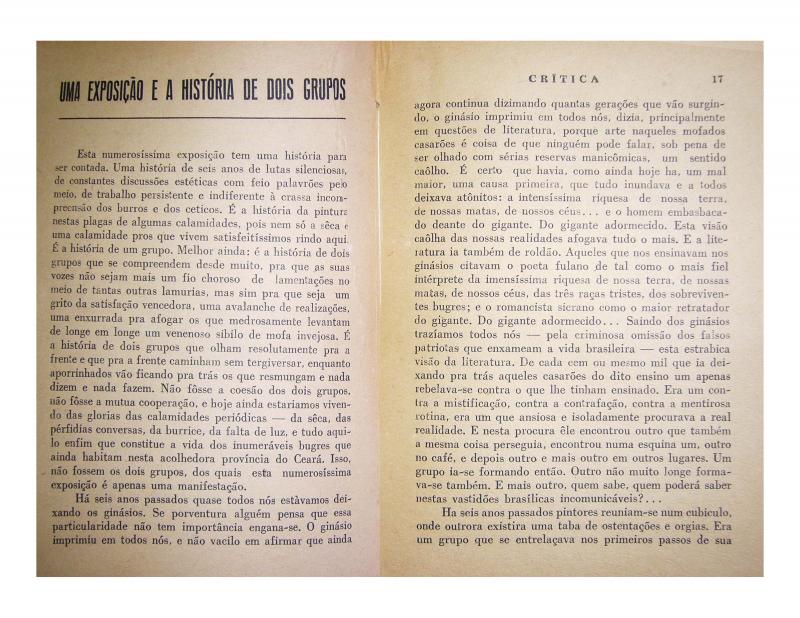The SCAP (Sociedade Cearense de Artes Plásticas) was founded in 1944, in Fortaleza, originally as a studio and later as a meeting place for local artists and critics. The organization subsequently broadened its horizons and sought to encourage and promote artists with a range of activities that included Salons, exhibitions, talks, and art classes. In 1958 the SCAP contributed to the promotion of modern art in the state of Ceará by pairing authors such as Mário Baratta with artists of some renown such as Antonio Bandeira, Inimá de Paula, and Aldemir Martins. The group spawned the CLA (Clube de Literatura e Artes), and that acronym became the name of Clã magazine which, over the course of four decades (1946–88), published articles about literature, the visual arts, theater, and film.
[For more information about the SCAP, see by Baratta in the ICAA digital archive “Aldemir Martins e a pintura” (doc. no. 1110782); “Exposição cearense” (doc. no. 1111388); “Pincéis e violinos” (doc. no. 1110784); and the letter from Mario de Andrade (doc. no. 1110783). See also the following articles by members of the group and the magazine team such as José Roberto Teixeira Leite, “Raimundo Cela: um pioneiro esquecido” (doc. no. 1110790); and by Ronaldo Brito “Trágico moderno” (doc. no. 1110423). See also by Vera Lúcia Alburquerque de Moraes “Abrindo a revista” (doc. no. 1110770); by Aluízio Medeiros “Uma exposição e a história de dois grupos” (doc. no. 1110776); and by Barboza Leite (untitled) [“A arte preside o destino da humanidade (…)”] (doc. no. 1110786)].









